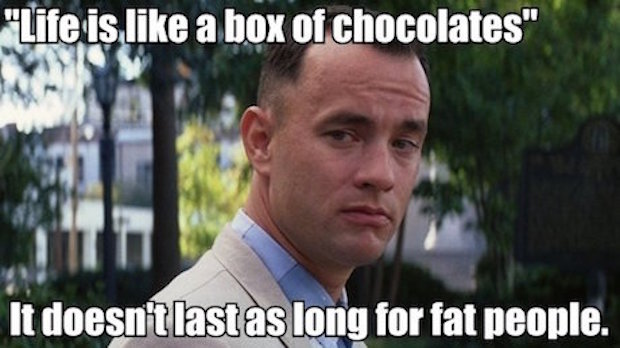Seventy-four per cent of men and 64 per cent of women in Britain will be overweight or obese by 2030, or so the newspapers have reported today. In Ireland, the situation will be still worse, with the obesity rate amongst women predicted to rise from 23 per cent today to 57 per cent (!) in 2030, with 89 per cent of Irish men overweight.
The research in question was presented at a conference in Prague today but remains unpublished so we do not know how its authors arrived at these figures. A representative of the World Health Organisation says, ‘the data needs to be taken with extreme caution’, but this advice has not been taken by the writers of such headlines as ‘Almost everyone in Ireland will be overweight by 2030‘.
Before we get too carried away by the hoo-hah, it’s worth reflecting on the track record of obesity predictions – a record which is, to put it mildly, sub-optimal. In 2006, a Department of Health report predicted that 28 per cent of women and 33 per cent of men would be obese by 2010. Although a prediction for just four years in advance sounds a modest task, 2010 came and went with obesity rates of 26 per cent for both sexes.
In 2007, the well-regarded Foresight report predicted that ‘by 2015, 36% of males and 28% of females will be obese’. Figures for 2015 have not yet been published but the most recent data for England show rates of 26 per cent and 24 per cent respectively.
Undeterred by these failed efforts at clairvoyance, The Lancet published a report in 2011 which predicted that nearly half of all British men and 43 per cent of British women would be obese by 2030. It would take an extraordinary surge in prevalence for this to come to pass. Current rates are below The Lancet‘s lowest confidence interval and appear unlikely to catch up.
Today’s prediction of a third of men being obese sounds almost cautious compared to The Lancet‘s 48 per cent, but it is worth remembering that if previous predictions had been correct, that landmark would have been reached five years ago. Instead, while obesity rates remain at around a quarter of the male population, as they have for some years, the failed forecasts of the past have been quietly forgotten as we brace ourselves for the new peril.
Today’s report focuses on the overweight as well as the obese, despite the fact that there is no excess mortality risk associated with being overweight. Overweight is much broader category, especially since it was redefined as a body mass index (BMI) of >25 instead of >27 as it had been previously.
The researchers say that 74 per cent of men and 64 per cent of women will be overweight or obese by 2030. Current rates in England are 67 per cent and 57 per cent respectively – so not a million miles away – and yet the recent trend makes it appear doubtful. The graphs below are based on data from the most recent Health Survey for England. They show the rate of overweight (including obesity) for men and women since 1993.

 Both data sets show a rise in overweight and obesity in the 1990s followed by a levelling off at around 66 per cent for men and 57 per cent for women. Both rates have risen by 10 percentage points in the last 20 years but almost all of the increase occurred between 1993 and 2004. If the latest prediction is to be proven correct, rates of overweight and obesity will have to be kick-started back to life from their decade-long slumber.
Both data sets show a rise in overweight and obesity in the 1990s followed by a levelling off at around 66 per cent for men and 57 per cent for women. Both rates have risen by 10 percentage points in the last 20 years but almost all of the increase occurred between 1993 and 2004. If the latest prediction is to be proven correct, rates of overweight and obesity will have to be kick-started back to life from their decade-long slumber.
I can’t be sure until the research is published, but I suspect the researchers have extrapolated from the trend of the 1980s and 1990s rather than the broadly flat trend of the past decade. That’s what the authors of The Lancet report did in 2011 and it’s an unsatisfactory method. There is no reason to think that obesity rates rise in a linear line indefinitely and there is certainly no reason to ignore recent trends in favour of historical trends.
How confident are these researchers of their predictions, I wonder? If they are prepared to put money on them then I, for one, would be happy to take the bet. If the form book is any guide, it’s a home banker.
Incidentally, if the predictions reported today sound familiar it’s because they have been recycled almost word for word from last year. Compare and contrast this report from May 2014 with this report from today and you will see the striking similarities. They are exactly the same estimates from the same researchers using the same modus operandi of press releasing an unpublished conference presentation.
Above all, both reports are filled with the same demands for taxes, bans and other government intervention to tackle the catastrophe that is forever looming just over the horizon. That, perhaps, is the best explanation for why so many obesity predictions are made and why so many of them prove to be wild overestimates.






Comments